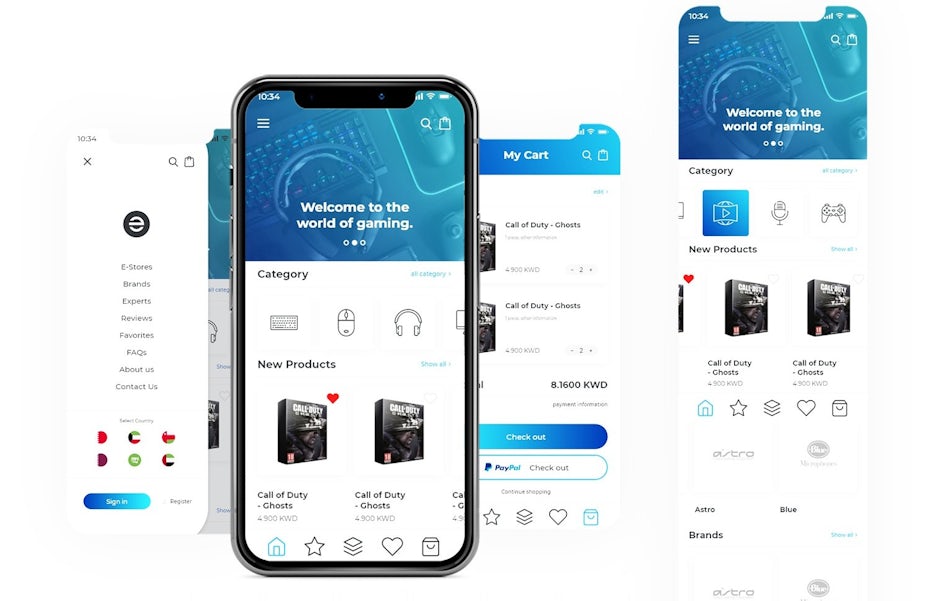Control Search Engine Result with Next-Level Mobile Optimization Techniques
Control Search Engine Result with Next-Level Mobile Optimization Techniques
Blog Article

The Ultimate Guide to Mobile Optimization: Approaches for Enhancing Web Site Efficiency on Smartphones and Tablets
The methods for improving site performance on mobile systems go beyond simple adjustment; they include an extensive strategy that includes responsive style, rate optimization, content techniques, and individual experience improvements. By diving right into the details of mobile optimization, organizations can not just satisfy individual assumptions however additionally remain in advance in a competitive digital landscape.
Relevance of Mobile Optimization
Mobile optimization plays a pivotal role in boosting individual experience and driving conversion prices in the ever-evolving electronic landscape. With the enhancing usage of smart devices and tablet computers for surfing the web, ensuring that sites are enhanced for mobile devices has actually come to be crucial for businesses - Mobile Optimization. A mobile-optimized site not just adapts flawlessly to different screen sizes however likewise tons rapidly, offering users with a smooth and pleasurable browsing experience
In today's fast-paced globe, users anticipate immediate accessibility to info on the go. An internet site that is not maximized for mobile devices risks shedding possible consumers because of slow packing times or an inadequate interface. By purchasing mobile optimization, businesses can deal with the demands of their mobile audience, causing higher involvement and increased conversions.
In addition, online search engine like Google prioritize mobile-friendly sites in their rankings, making mobile optimization important for boosting exposure and bring in natural web traffic. Mobile Optimization. Generally, the value of mobile optimization can not be overemphasized, as it directly influences individual fulfillment, conversion prices, and overall business success in the electronic realm
Responsive Layout Techniques
Implementing responsive design techniques makes sure that sites dynamically adjust their design and web content based upon the individual's tool screen size, supplying a constant customer experience across different platforms. One of the most common approaches used in responsive style is producing fluid grids that permit content to resize proportionally to the display size. This makes certain that components on the page preserve their relative spacing and plan, maximizing the viewing experience for users on different tools.
Furthermore, making use of versatile images that can scale with the dimension of the viewport aids prevent photos from being cropped or misshaped on smaller sized displays. CSS media queries play a crucial role in responsive layout by enabling designers to use particular styles based on the tool characteristics such as display size, elevation, and alignment. By leveraging media queries, internet sites can adapt their layout and design to suit smartphones, tablets, and desktop computer screens perfectly.
Incorporating receptive style techniques not only improves user experience however also adds to improved internet search engine positions, as internet search engine like Google prioritize mobile-friendly websites in their mobile search results page. By welcoming receptive layout, internet sites can accommodate the diverse demands of customers accessing web content on a range of tools, inevitably driving involvement and conversions.
Rate and Performance Optimization

One key technique is optimizing pictures and multimedia content to minimize documents dimensions without jeopardizing quality. Pressing images, leveraging contemporary photo formats like WebP, and lazy filling offscreen photos are reliable techniques to speed up lots times read (Mobile Optimization). Minimizing HTTP requests, leveraging internet browser caching, and minimizing web server feedback times are crucial steps in boosting performance.
Implementing a content delivery network (CDN) can additionally significantly increase website speed by dispersing web content throughout several web servers globally, minimizing latency for users accessing the website from different locations. Prioritizing crucial above-the-fold web content and deferring non-essential scripts can better improve perceived efficiency. By concentrating on rate and performance optimization, websites can deliver a seamless and rewarding customer experience on mobile phones.
Mobile-Friendly Content Methods
To optimize material for mobile devices, it is vital to focus on readability and interaction through tactical format and succinct messaging. Mobile-friendly web content approaches include customizing the presentation of info to match the smaller displays and on-the-go nature of mobile phone and tablet customers. One vital element is to make sure that message is easily understandable without the demand for zooming in, utilizing font dimensions that are legible on mobile displays. In addition, damaging up content into much shorter paragraphs and utilizing bullet factors can assist boost readability and make it less complicated for users to take in details rapidly.
Incorporating engaging visuals, such as photos and video clips maximized for mobile viewing, can also improve the total individual experience. These visuals ought to matter, premium, and load rapidly to stop customers from losing interest. Additionally, integrating interactive elements like quizzes, polls, or surveys can enhance individual engagement and encourage active engagement.
User Experience Enhancements
Structure on the foundation of mobile-friendly web content strategies, improving individual experience involves enhancing every touchpoint to make certain seamless interaction and complete satisfaction for mobile individuals. One critical element of boosting customer experience on mobile tools is ensuring fast packing times.
Along with speed up and receptive layout, streamlining navigating is vital for a favorable individual experience. Clear and user-friendly navigation menus, famous search bars, and purposefully placed call-to-action switches can aid individuals easily discover what they are looking for on a mobile site. Optimizing types for mobile customers by reducing the number of areas and utilizing auto-fill attributes can additionally improve the total individual experience. By concentrating on these customer experience enhancements, sites can effectively engage and preserve mobile visitors.
Final Thought
To conclude, mobile optimization is crucial for boosting internet site performance on smartphones and tablet computers. By executing responsive layout techniques, enhancing rate and efficiency, creating mobile-friendly web content, and enhancing individual experience, businesses can successfully reach and involve with their mobile audience. It is essential for web sites to adapt to the boosting mobile usage you could look here fads in order to continue advice to be competitive in the electronic landscape.
Report this page